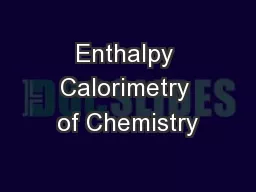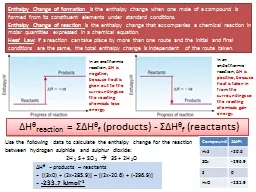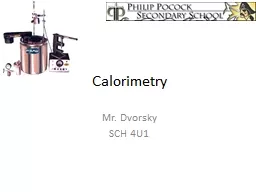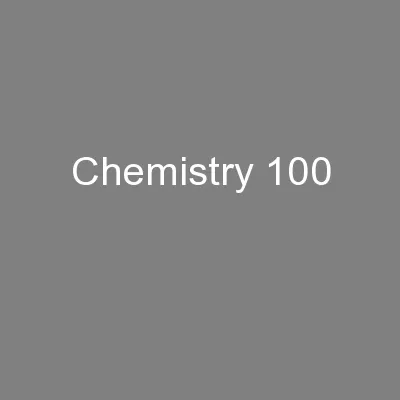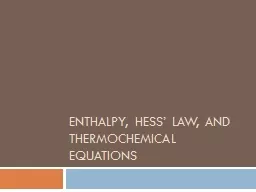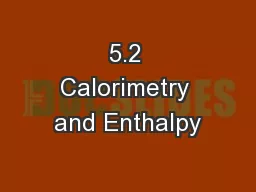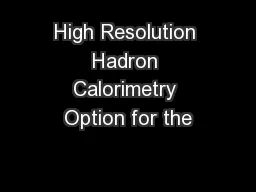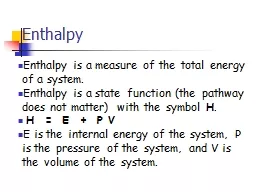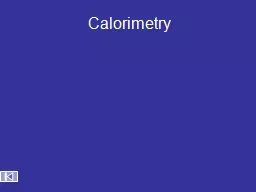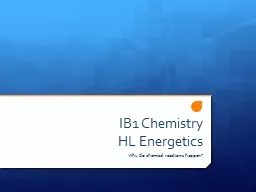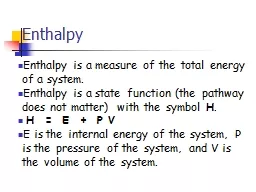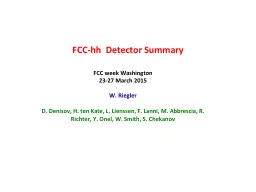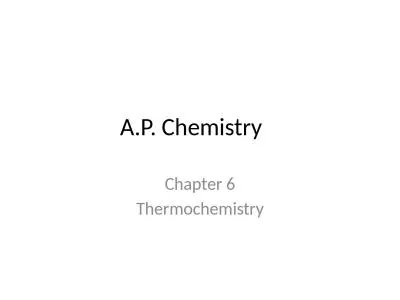PPT-Enthalpy Calorimetry of Chemistry
Author : ellena-manuel | Published Date : 2018-11-01
Reaction Energies In our earlier discussions of calorimetry we used physical sources of heat hot metal slug It is also possible to use chemical sources of heat
Presentation Embed Code
Download Presentation
Download Presentation The PPT/PDF document "Enthalpy Calorimetry of Chemistry" is the property of its rightful owner. Permission is granted to download and print the materials on this website for personal, non-commercial use only, and to display it on your personal computer provided you do not modify the materials and that you retain all copyright notices contained in the materials. By downloading content from our website, you accept the terms of this agreement.
Enthalpy Calorimetry of Chemistry: Transcript
Reaction Energies In our earlier discussions of calorimetry we used physical sources of heat hot metal slug It is also possible to use chemical sources of heat like hot packs and cold packs. Measured values show the thermophysical properties of the examined system or sample There are two bas ic types of calorimeters isothermal and adiabatic Constant temperature is sustained in t he isothermal calorimeter t means that the calorimeter is is the enthalpy change when one mole of a compound is formed from its constituent elements under standard conditions. . Enthalpy Change of reaction . is the enthalpy change that accompanies a chemical reaction in molar quantities expressed in a chemical equation. . Mr. . Dvorsky. SCH 4U1. A calorimeter is an object used for measuring the heat of a chemical reaction or physical change. . Can be as simple as a pair of cups and a thermometer, or as complex as a device attached to the Large Hadron Collider.. Enthalpy and Hess’s Law. Energy Changes in Chemical Reactions. Let’s take a typical reaction. CH. 4 . (g) + O. 2. (g) . CO. 2. (g) + 2 H. 2. O (l). . This is an example of ‘burning a fossil fuel.’ This reaction releases energy! . Quick Review of Concepts. We have been introduced to heat producing (. exothermic. ) reactions and heat using (. endothermic. ) reactions. Heat is a measure of the transfer of . energy. from a system to the surroundings and from the surroundings to a system. Internal Energy Equation. ΔE = Q + W = Q . + . PΔV. If the reaction is carried out at a constant volume (ΔV = 0) , then ΔE = Q. If volume is constant, any heat added or removed changes the internal energy. Heat Capacity. Specific Heat Capacity (c): . the quantity of thermal energy required to raise the temperature of 1 g of a substance by 1°C.. Units are in J/g∙°C. Heat Capacity. Specific . heat capacity values can be looked up in tables. SiD. ?. Adam Para. ALCPG meeting, December 20, 2007. Other Possible Titles. Homogeneous Dual Readout Calorimeter. A List of Miracles and Why You would Like Them to Happen. Prospects for Crystal-based Hadron Calorimetry. Enthalpy . is a state function . (the pathway does not matter) with . the symbol . H. .. . H . = E . P V. E . is the internal energy of the system, P is the pressure of the system, and V is the volume of the system.. Calorimetry Burning of a Match Zumdahl, Zumdahl, DeCoste, World of Chemistry 2002, page 293 Energy released to the surrounding as heat Surroundings System (Reactants) D (PE) Potential energy (Products) Why do chemical reactions happen?. Topic . 15: Energetics (. 8. . hours). 15.1 . Standard enthalpy changes of reaction. 15.1.1 . Define and apply the terms standard state, standard enthalpy change of formation (¬H ) f. Enthalpy . is a state function . (the pathway does not matter) with . the symbol . H. .. . H . = E + . P V. E . is the internal energy of the system, P is the pressure of the system, and V is the volume of the system.. FCC week Washington. 23. -27 March . 2015. W. . Riegler. D. . Denisov. , H. . ten. Kate, L. . Lienssen. , F. . Lanni. , M. . Abbrescia. , R. Richter, Y. . Onel. , W. Smith, S. . C. hekanov. Exploration + Higgs as a tool for . Thermochemistry. 1. st. Law of Thermodynamics- total energy of the universe is constant (p. 244). Definitions and State Functions. System. - a system is the part of the universe that is being studied. In Chemistry, this is often just a particular reaction (p. 243).
Download Document
Here is the link to download the presentation.
"Enthalpy Calorimetry of Chemistry"The content belongs to its owner. You may download and print it for personal use, without modification, and keep all copyright notices. By downloading, you agree to these terms.
Related Documents

